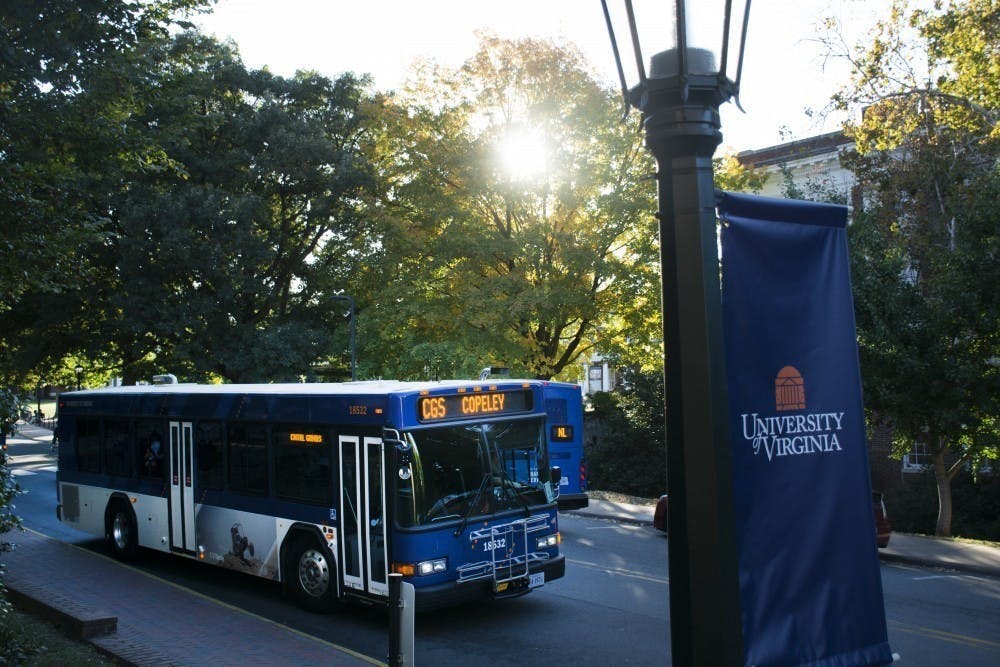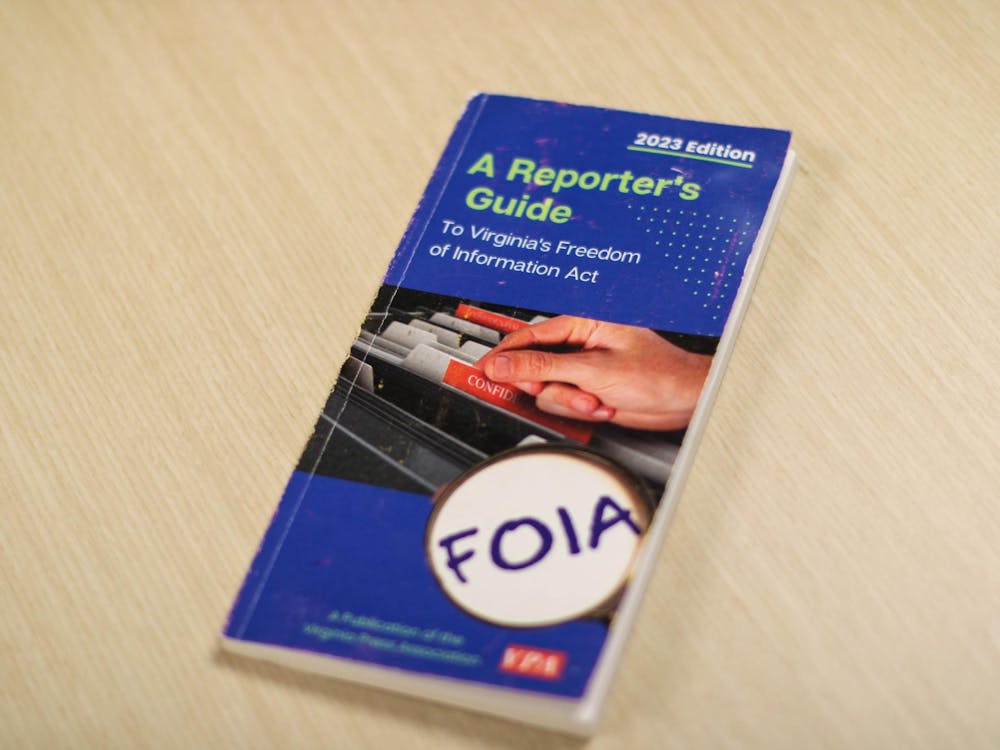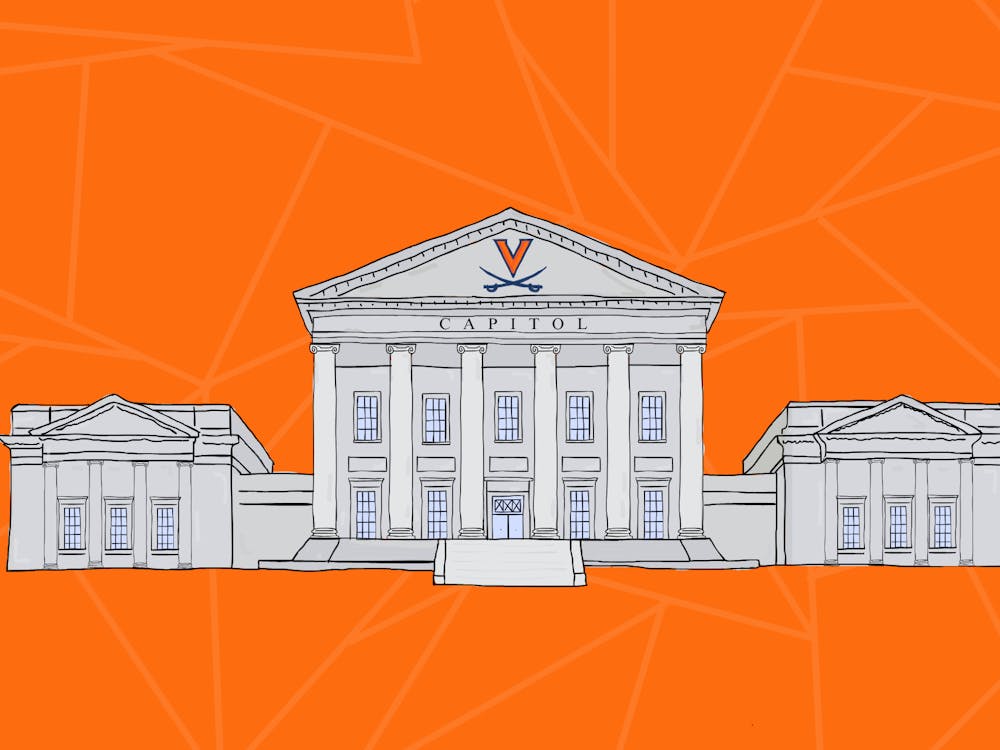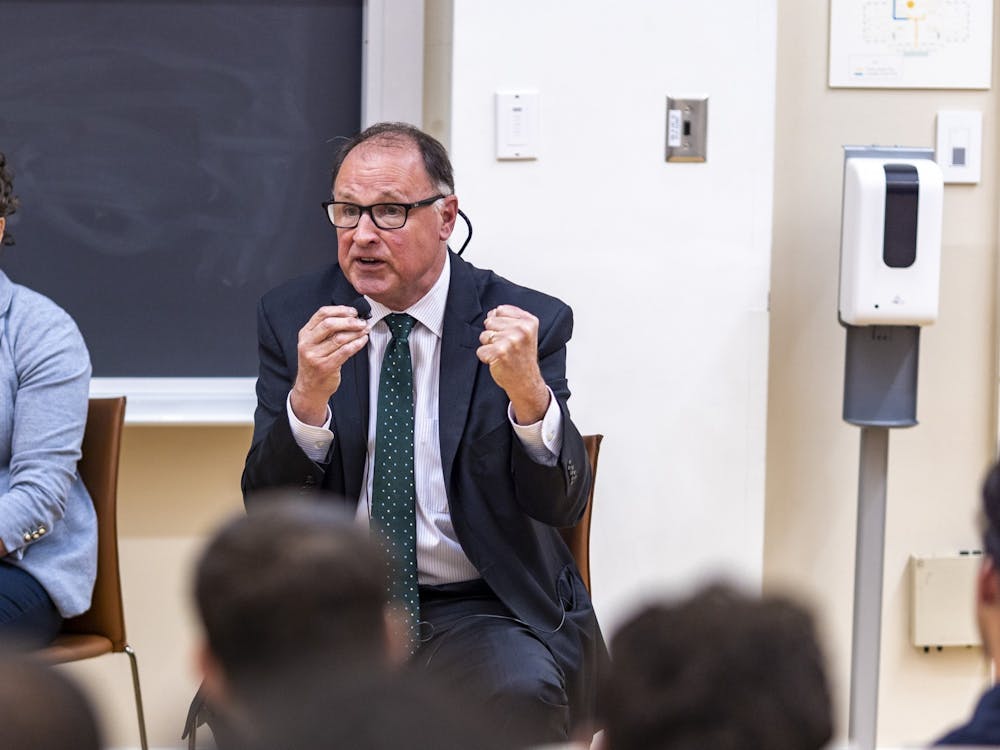As students and faculty navigate the return to a fully in-person semester, some report frustration with changes to University Parking and Transportation bus schedules and routes — many which resulted from new pandemic guidelines and the pedestrianization of McCormick Road.
The University transit system was first altered in March 2020 and began full operations Aug. 24. Buses continue to hold a reduced capacity of 30 people and require all passengers to abide by the Centers for Disease Control and Prevention’s mask requirement for public transportation, and routes were also modified to reduce the number of passengers on board at a single time.
Over the summer, the Transportation Security Administration’s guidelines on masking were extended to Jan. 18, meaning masks will be mandated until then regardless of future changes to the University’s masking policy.
Given the transit systems’ obligation to abide by public transportation guidelines, University Parking and Transportation modified bus routes to accommodate a limited number of passengers. From 2008 to March 2020, University buses used McCormick Road as part of its route, serving as a mode of transportation for students moving from home to class. Now, instead of traveling down McCormick Road, the buses travel on Whitehead Road near Scott Stadium before 6 p.m. on weekdays.
“Passenger loading limits do not allow UTS to manage the crush of riders that was generated by serving class change on McCormick road during weekday class change,” said Rebecca White, the director of U.Va. Parking and Transportation.
White said this transition aims to better connect students who live in off-Grounds University housing to Central Grounds, rather than as a transit option for students already on Grounds. McCormick Road is now less congested by bus traffic, allocating more space for biking, walking and other modes of transport.
Although the University buses operate in the same areas as before, University Transit Service altered the routes with the hope of simplifying students’ experiences with the transit system. Previously, the two main loops operating on Grounds were referred to as the “Inner Loop” and the “Outer Loop.” Now, these two routes are split, with the Orange Line going down 14th Street and the Green Line operating on Rugby Road.
Some returning students report difficulty adjusting to the updated route names and stops.
“My friends and I have been struggling with the changes to the bus system,” said fourth-year College student Kanijah Brickhouse. “The buses don't even take you anywhere near where you need to be.”
In particular, Brickhouse said she anticipates the number of tardies and absences will increase as students find it harder to get to classes, particularly in inclement weather.
“I have a class at the drama department, and I have to walk from Bond because there is no longer an outer loop,” Brickhouse said.
Buses serving commuters to U.Va. Health did not change routes or route names — Blue and Red — but instead of both routes running at the same time, the buses now operate at different times.
“This has proved to be a more efficient way to move the 1,500 to 2,000 people per day who typically use these routes,” White said.
In addition to the modified bus routes, QR codes were added to each bus stop sign, allowing students to track their bus prior to boarding. Like in previous years, the app Transloc is available for students to navigate the different bus routes.
Buses still use rear door loading, which allows the driver to maintain a six-foot distance from passengers at all times.
Students noted buses appear less frequently than in previous years. For example, the new Gold and Green Lines, which serve Hereford Road, operate on a 20-minute schedule, providing buses every 10 minutes.
For Brickhouse, the bus route modifications make it much more difficult for her to get to her job on Grounds.
“If I were to walk from my apartment to my job, that would take at least 30 minutes and that takes a lot out of my day to be walking that far when there were bus systems that used to take me where I needed to go,” she said.
The route changes are also impacting faculty and staff commuting to work.
“My main concern now is the lack of access through Central Grounds via McCormick, since it is my understanding that the bus routes will no longer be traveling through there,” said Social Science Research Librarian Christine Slaughter. “It may make things difficult particularly for staff with disabilities.”
Last year, McCormick Road was closed to through traffic as the University redid the road outside of Monroe Hall in an effort to pedestrianise the road. As Slaughter noted, this means if someone parks at Emmet-Ivy Garage and works at Clemons Library, for example, the bus only takes them a small fraction of the way.
“The main reason I’ll take the shuttle is to simply get past the Emmet intersection next to the garage, which seems like a disaster waiting to happen for pedestrians,” Slaughter said.
At the first Student Council meeting of the semester Tuesday night, the representative body passed FR21-02, a resolution calling for UTS to reinstate stops on McCormick Road during business hours. The legislation was sponsored by Abel Liu, Student Council president and fourth-year College student.
The legislation specifically highlights the importance of the Black Bus Stop, a stop that was a gathering place for many Black students from the late 1970s to the early 2000s. Located on McCormick Road near Monroe and Garrett Hall, the stop was a valuable congregation space for Black students in the decades after the University fully integrated in the 1960s.
Claudrena Harold, African American studies and history professor, included the bus stop in her curriculum for her class Black Fire, which looks at the racial history of the University to better understand race on a national level.
For Black students, the Black Bus Stop allowed “open expression of Blackness” on a casual level, without any formal organization. Students from different Black fraternities and sororities met up and discussed politics, culture and other current issues. Eventually it lost its popularity as a gathering spot, but is still cemented in the history of Black culture at the University. In addition to its reinstatement as a UTS stop, the Student Council resolution calls for a historical marker at the site.
”UTS buses are currently not meeting student demand, leaving many students without accessible transportation to McCormick Road,” the resolution reads. “Students have expressed deep frustration and confusion with the new routes and frequency of busing.”
Another reason UTS removed the stops was pedestrian safety due to the high level of traffic in the area, which third-year College student Rep. Ella Tynch countered by saying that the area already experiences traffic from cars and other vehicles, and bus drivers are more careful of pedestrians than other drivers.
The resolution asks UTS to add more buses and hire new drivers in order to accommodate transportation needs and student demand. UTS is experiencing a shortage of drivers, and Liu acknowledged hiring more would be difficult. However, the resolution proposes that student drivers could be paid more in order to attract more applicants.
U.Va. Parking and Transportation is taking feedback from students on the new routes at transportation@virginia.edu.







